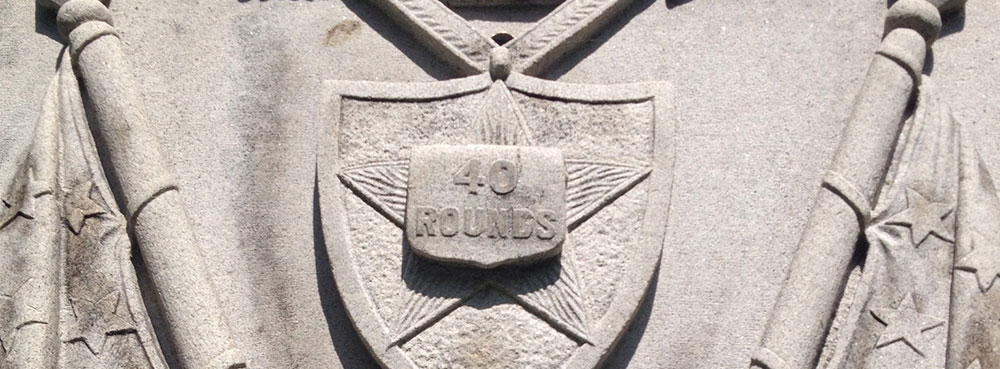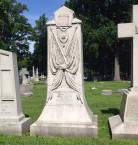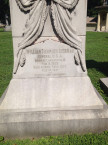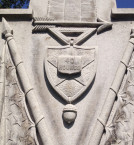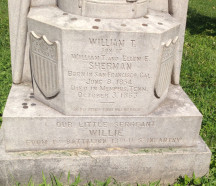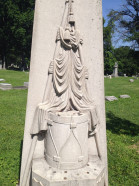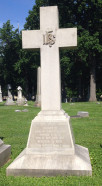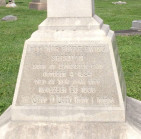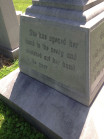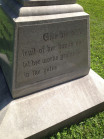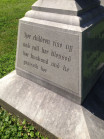These may be my favorite photographs of all-time. They are just endlessly fascinating. When you look at Sherman, you see his entire crazy, mixed-up world come shining through. You see the past and present weighing on him. You also see a number of raw emotions, including a rage that seems to simmer just below the surface. I could look at these photos forever.
So I painted one:

And another:
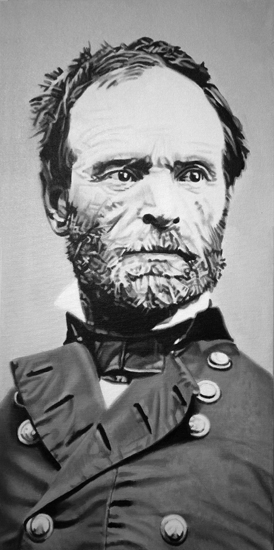
And another:
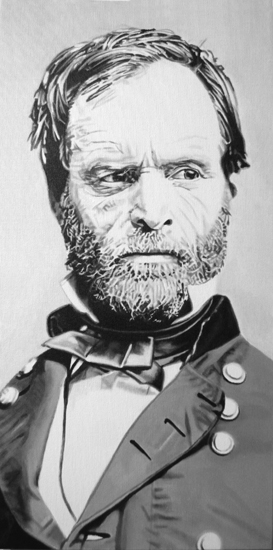
And from there, I was off and running. I painted 14 more portraits (not all of Sherman, of course), and created The American Civil War series, which you can see on my web site.
So as you can imagine, I was pretty excited (and a little bit surprised) to find out that General Sherman was buried in Calvary Cemetery, in my hometown of St. Louis, MO.
The Sherman family plot is located somewhat close to the entrance to Calvary–it was pretty easy to find (despite the fact that I am hopeless at reading a map, ANY map, and cemetery maps are the worst). William Tecumseh Sherman is buried alongside his wife, daughter, son, and a number of other relatives.
Sherman’s stone itself can best be described as venerable-looking. Located at the top between two American flags is the badge for the XV Corps, which had been commanded by Sherman in Vicksburg.
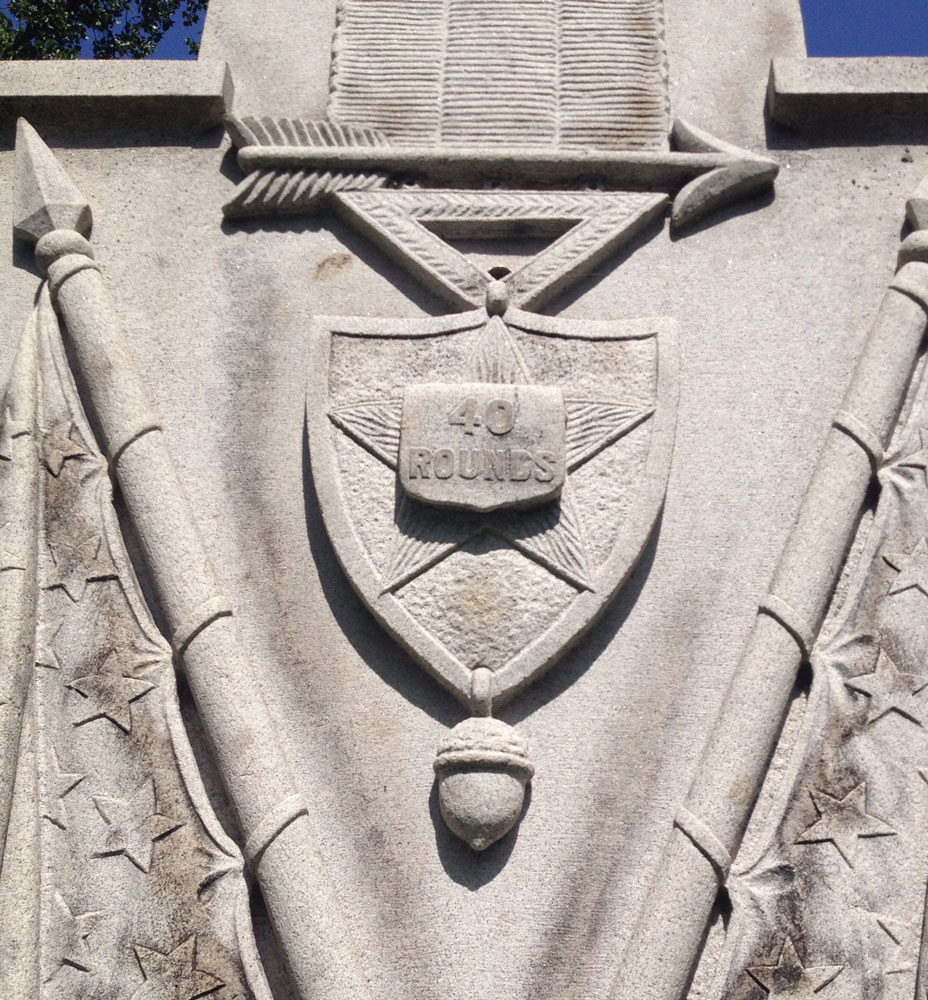
This badge has a great story behind it–from Sherman’s Memoirs:
“It was on this occasion that the Fifteenth Corps gained its peculiar badge: as the men were trudging along the deeply-cut, muddy road, of a cold, drizzly day, one of our Western soldiers left his ranks and joined a party of the Twelfth Corps at their camp-fire. They got into conversation, the Twelfth-Corps men asking what troops we were, etc., etc. In turn, our fellow (who had never seen a corps-badge, and noticed that every thing was marked with a star) asked if they were all brigadier-generals. Of course they were not, but the star was their corps-badge, and every wagon, tent, hat, etc., had its star. Then the Twelfth-Corps men inquired what corps be belonged to, and he answered, ‘The Fifteenth Corps.’ ‘What is your badge?’ ‘Why,’ said he (and he was an Irishman), suiting the action to the word, ‘forty rounds in the cartridge-box, and twenty in the pocket!'”
A number of people have left coins on the stone:
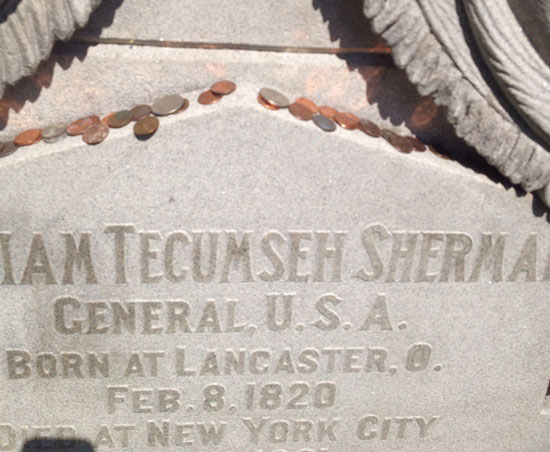
I noticed that a lot in the cemeteries I visited in St. Louis: People leave coins rather than pebbles–and not just on military stones, on all graves. I rarely see coins on graves in Green-Wood. Huh.
 Sherman’s wife, Eleanor “Ellen” Boyle Ewing Sherman is buried next to him.
Sherman’s wife, Eleanor “Ellen” Boyle Ewing Sherman is buried next to him.
Ellen was from a prominent family; Her father was Thomas Ewing, an important Whig politician, and three of her brothers served as generals in the Civil War. Thomas Ewing was good friends with Charles Sherman, William’s father. When Charles Sherman died suddenly in 1829, Thomas Ewing adopted the young William and raised him as his own.
Wiliam and Ellen grew up together in the same home, eventually falling in love. Oh, the drama in that house must have been grand! They were married in 1850. From what I’ve read, her father did not quite approve.
Ellen was a devout Catholic, and one of the key organizers of the Catholic Indian Missionary Association. She was also active in politics; she was a staunch supporter of Abraham Lincoln, despite the fact that women weren’t allowed to vote at this time.
Ellen and William had eight children together. Their second-oldest daughter Mary Elizabeth Sherman (a.k.a., “Lizzie”) is buried to the left.
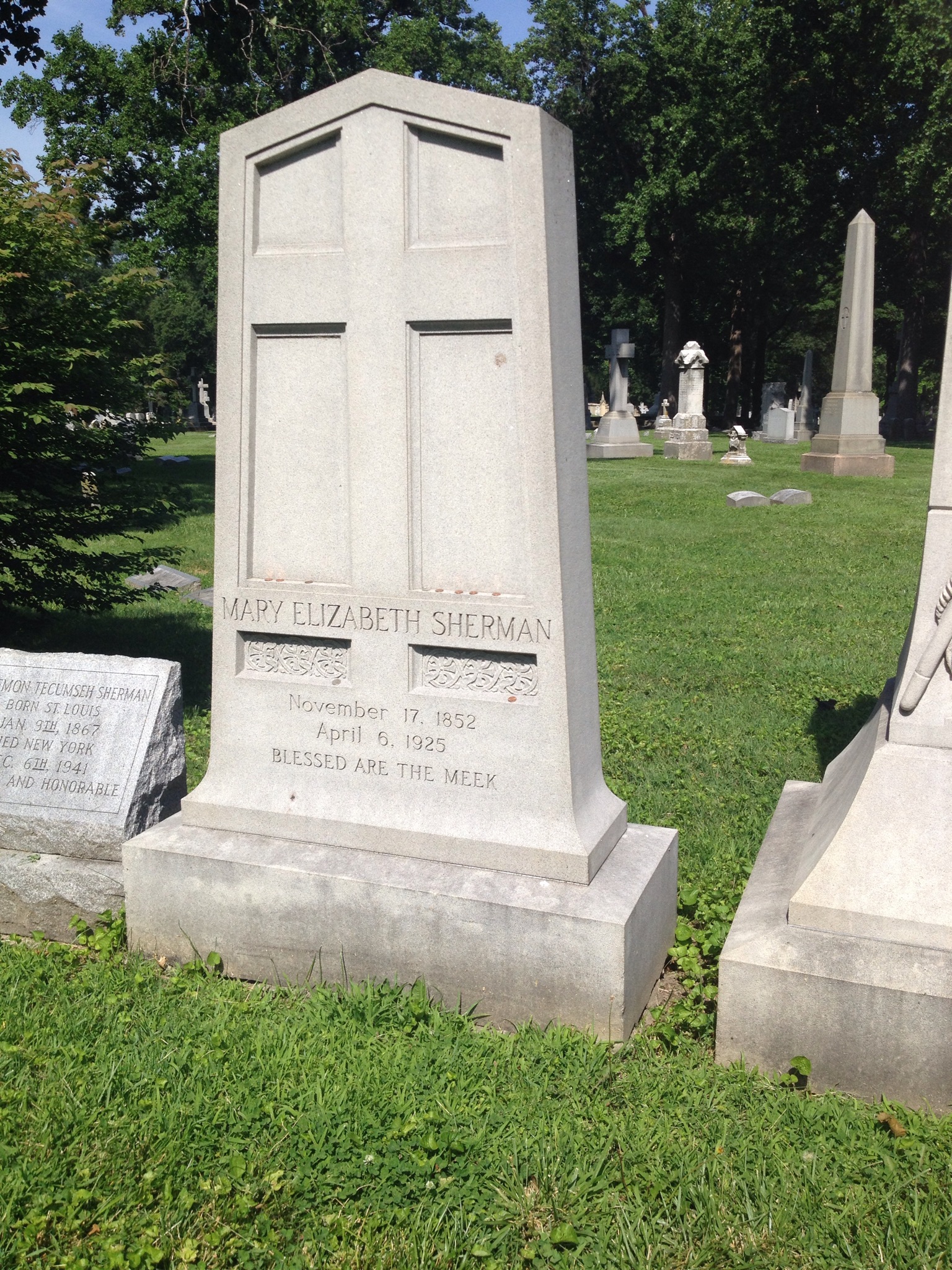
I couldn’t find out much about her other than the fact that she never married, and died in Massachussetts in 1925.
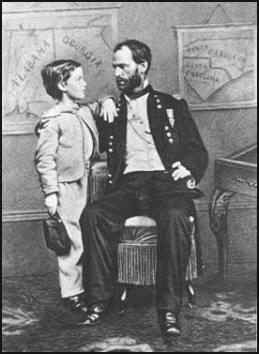
But perhaps the most poignant part of the Sherman family plot is the stone for Sherman’s 9-year-old son, “Our Little Sergeant Willie”. Willie and his brothers and sisters had joined their father in Mississippi after the surrender of Vicksburg. They stayed with him at the military camp on the Big Black.
Apparently, Willie loved the military, and was a great favorite with not just his father, but with all of the soldiers, who made him an honorary sergeant.
He died from “Camp Fever” while bound for Memphis on the steamer Atlantic:
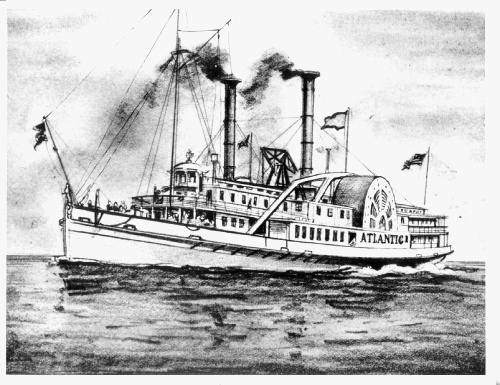
Apparently, Sherman held himself responsible for his son’s death. He believed it was his fault for bringing his family down to Mississippi and exposing them “to so fatal a climate at so critical a period of the year”. Many believe that he was driven mad with grief, which explains why he marched through the South burning and killing with a vengeance.
Here’s an article about Sherman’s funeral from the St. Louis Post-Dispatch.

